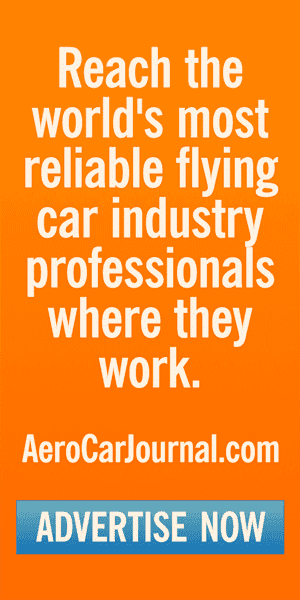‘Take Off Here’ Dallas Tells VTOLs

There’s the old saying, “Fool me once, shame on you. Fool me twice, shame on me.” To be sure, the people running the City of Dallas are no fools. They are quick learners, in fact.
“Look at electric scooters. They’re here. They’re everywhere,” says Dallas Director of Transportation, Michael Rogers. “We were still trying to figure out how to deal with dockless bikes and the electric scooter sharing programs came out before we even finished.”
So, when it comes to new technologies – especially, and including flying cars – the City of Dallas switched up the way it does things. It looks forward now, inviting technologies and the companies developing them to the table; not only to be part of the discussion but to help explain the challenges a given technology will present. In this way, the Department of Transportation and the City Council can plan and implement policies to accommodate the new modes of transportation, turning hurdles into potential opportunities.
“We need to keep our eye on the future,” Rogers explains. “That’s how fast the technology is moving.”
To meet that goal, Dallas is developing a strategic mobility plan.
A Future With Flying Cars? Dallas Says, ‘Let’s Talk!”
In early 2018, Dallas launched an 18-month initiative with $1.5 million in funding from the city council and other funding from surrounding regional transportation agencies to review current and future modes of transportation. The initiative will examine how the city and surrounding metropolitan area should be integrated to solve any number of mobility problems they face.
“We have high-speed rail coming into our downtown area. We have hyperloops proposed. We have a subway being built. And, we have flying cars to consider,” Rogers explains. (Los Angeles, Dubai, and Dallas have been selected by Uber as one of three cities in which to test and adopt flying cars and air taxis.) “And, that’s on top of our modern streetcar system, our highway system, and other public transit options.”
The city is examining how these various mobility options can solve some of its existing problems as well as those expected in the future.
“Think about one problem: Congestion on our roads,” Rogers says. Because Dallas is one of the hottest real estate markets in the country, that congestion will only worsen—unless you can use flying cars to help alleviate some of that congestion by literally taking cars off the road and putting them in the sky.
“Another issue we have is air quality attainment. We’re outside of the current attainment standards,” says Rogers. “Well, guess what? Many of these flying car systems are electric-powered, so they’re going to be cleaner for the environment too.”
The congestion on Dallas’s roads means it often takes too long to get from Point A to Point B. “If you have another mode that gets you from A to B more quickly, you’re solving another problem,” Rogers explains.
Mobility, connectivity, and accessibility are three of the biggest challenges any city faces. Dallas’s Strategic Mobility Plan is its road map to its mobility future. The plan is also impacted by, and impacts, housing policies and economic development. So, rather than have the technologies and the technology companies just arrive on-scene and ‘do their thing,’ Dallas is welcoming them.
“We’re trying to set the ground rules now based on inviting all these companies to the table,” Rogers says. The Dallas Strategic Mobility Plan will serve as a model for the entire metropolitan region (which has about 5 million residents). In addition to the Dallas Department of Transportation, their committees include representatives from the Texas Department of Transportation, the County government, and the area’s two airports – Dallas-Fort Worth and Dallas Love Field.
Combined, they will address what Rogers says is the biggest challenge currently: land use. Dallas’s highway system created vast opportunities. These new transportation modes, such as high-speed rail or flying vehicles could stretch the limits of its land use and provide economic opportunities.
“This is more than one company’s vision,” Rogers says. “It’s really going to take a turn in the Dallas area because we’re trying to create an environment for these technologies that will help our mobility. We want to make sure we’re working together with these companies to ensure long-term success with their technology. We know this: We’re growing. But if we don’t address our growth, then we’ll stop growing. We want to continue to grow and provide the resources to our public so they can be as mobile as possible.”


